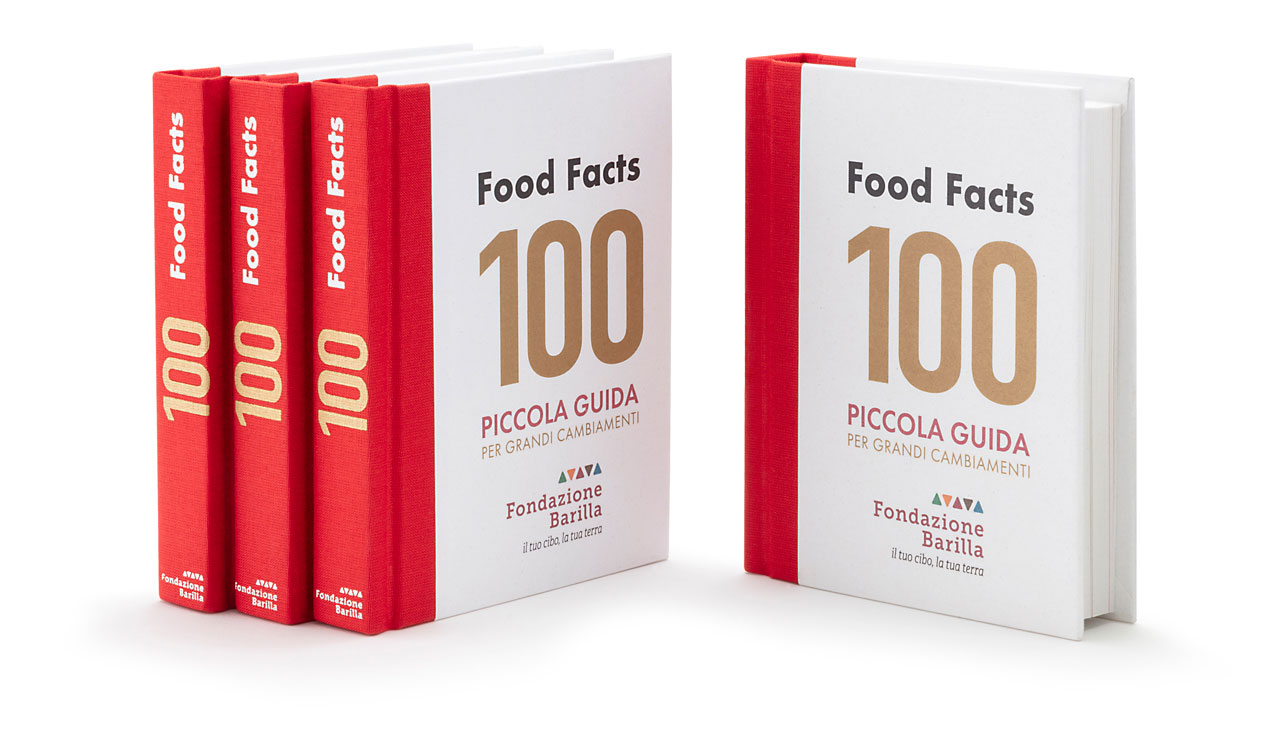
FIND OUT IN THE BOOK HOW TO EAT BETTER AND SAVE MONEY
Taking small steps every day, backed by scientific information and knowledge, for a healthy and balanced lifestyle, for you and the environment. Discover them all!

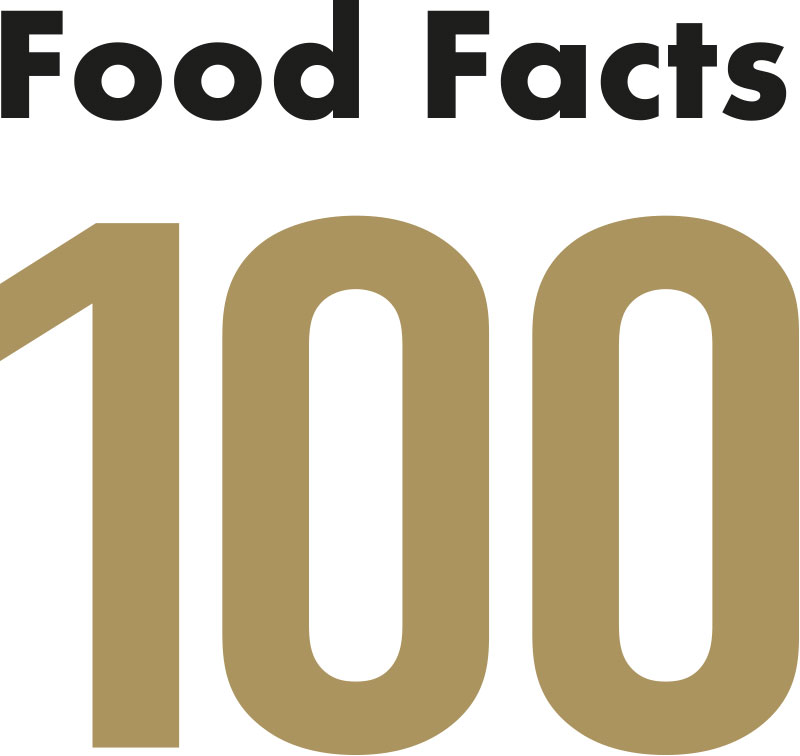
Small guide for big changes


100 Food Facts - PICCOLA GUIDA PER GRANDI CAMBIAMENTI is based on the analysis of scientific literature and on the research carried out by the Foundation Barilla with a multidisciplinary approach. The language and information provided they are deliberately simplified for this purpose to make concepts more understandable complex and spread greater awareness among people.
For further information on topics addressed, discover the studies and the research of the Barilla Foundation on the website www.fondazionebarilla.com

Introduction
After years of studies on the relationship between food, environment and people, we are pleased to present this to you SMALL GUIDE FOR BIG CHANGES.
Many simple and concrete, capable actions to offer personal, economic benefits and environmental; lots of curiosities and delicious recipes.
Small tips and suggestions to put into practice while shopping, at the table or in the restaurant, to share our health with that of our land.

Keep an eye on savings
Food Fact 1
Action 1
Food Fact 2
Action 2
Food Fact 3
Action 3
Food Fact 4
Action 4
Food Fact 5
Action 5
Food Fact 6
Action 6
Food Fact 7
Action 7
Food Fact 8
Action 8
Food Fact 9
Action 9
Food Fact 10
Action 10
Food Fact 11
Action 11
Food Fact 12
Action 12
Food Fact 13
Action 13
Food Fact 14
Action 14
Food Fact 15
Action 15
Food Fact 16
Action 16
Food Fact 17
Action 17
Food Fact 18
Action 18
Food Fact 19
Action 19
Food Fact 20
Action 20

Let's cook together
Food Fact 1
Action 1
Food Fact 2
Action 2
Food Fact 3
Action 3
Food Fact 4
Action 4
Food Fact 5
Action 5
Food Fact 6
Action 6
Food Fact 7
Action 7
Food Fact 8
Action 8
Food Fact 9
Action 9
Food Fact 10
Action 10
Food Fact 11
Action 11
Food Fact 12
Action 12
Food Fact 13
Action 13
Food Fact 14
Action 14
Food Fact 15
Action 15
Food Fact 16
Action 16
Food Fact 17
Action 17
Food Fact 18
Action 18
Food Fact 19
Action 19
Food Fact 20
Action 20

Did you know that
Food Fact 1
Action 1
Food Fact 2
Action 2
Food Fact 3
Action 3
Food Fact 4
Action 4
Food Fact 5
Action 5
Food Fact 6
Action 6
Food Fact 7
Action 7
Food Fact 8
Action 8
Food Fact 9
Action 9
Food Fact 10
Action 10
Food Fact 11
Action 11
Food Fact 12
Action 12
Food Fact 13
Action 13
Food Fact 14
Action 14
Food Fact 15
Action 15
Food Fact 16
Action 16
Food Fact 17
Action 17
Food Fact 18
Action 18
Food Fact 19
Action 19
Food Fact 20
Action 20

Your health
Food Fact 1
Action 1
Food Fact 2
Action 2
Food Fact 3
Action 3
Food Fact 4
Action 4
Food Fact 5
Action 5
Food Fact 6
Action 6
Food Fact 7
Action 7
Food Fact 8
Action 8
Food Fact 9
Action 9
Food Fact 10
Action 10
Food Fact 11
Action 11
Food Fact 12
Action 12
Food Fact 13
Action 13
Food Fact 14
Action 14
Food Fact 15
Action 15
Food Fact 16
Action 16
Food Fact 17
Action 17
Food Fact 18
Action 18
Food Fact 19
Action 19
Food Fact 20
Action 20

Your land
Food Fact 1
Action 1
Food Fact 2
Action 2
Food Fact 3
Action 3
Food Fact 4
Action 4
Food Fact 5
Action 5
Food Fact 6
Action 6
Food Fact 7
Action 7
Food Fact 8
Action 8
Food Fact 9
Action 9
Food Fact 10
Action 10
Food Fact 11
Action 11
Food Fact 12
Action 12
Food Fact 13
Action 13
Food Fact 14
Action 14
Food Fact 15
Action 15
Food Fact 16
Action 16
Food Fact 17
Action 17
Food Fact 18
Action 18
Food Fact 19
Action 19
Food Fact 20
Action 20

The recipes
Pasta e fagioli
Un primo piatto “povero” a base di fagioli, un legume prezioso per l’organismo e con un altissimo livello di sostenibilità ambientale.

Ingredients for 4 servings
Fagioli borlotti 200 g
Pasta di semola 120 g
Sedano, carote, cipolla 80 g
Patate 200 g
Pomodoro 100 g
Uno spicchio di aglio
2 cucchiai di olio extravergine
di oliva (20 g)
Sale q.b.
Pepe q.b.
Prezzemolo
Nutritional informations
Per porzione: 341 KcalEnvironmental impact
Per porzione:
102 g CO2 equivalente – impronta di carbonio
177 litri – impronta idrica
Preparation
Prepara un battuto di sedano, carote e cipolla e fallo soffriggere leggermente con un goccio d’olio.
Aggiungi i fagioli (precedentemente lasciati in ammollo tutta la notte). Aggiungi l’acqua, sale, pepe e lascia cuocere almeno un’oretta. Una volta cotti i fagioli, aggiungi le patate tagliate a cubetti e completane la cottura. Aggiungi al brodo di fagioli e patate un battuto di aglio, prezzemolo e pomodoro e fai cuocere per altri cinque minuti. Aggiungi anche la pasta e portala a cottura.
Germogli di soia, carote e melone
Poveri di calorie ma ricchi di nutrienti, i germogli di soia sono dei veri e propri integratori naturali che ci aiutano anche a disintossicare il corpo.

Ingredients for 4 servings
Germogli di soia 150 g
Carote 200 g
Melone 350 g
Salsa di soia 5 ml (facoltativa)
2 cucchiai di olio extravergine di oliva (20 g)
Nutritional informations
Per porzione: 95 KcalEnvironmental impact
Per porzione:
101 g CO2 equivalente – impronta di carbonio
385 litri – impronta idrica
Preparation
Pela e lava le carote, tagliale a sottili lamelle con l’apposito attrezzo o con il pelapatate. Mettile a bagno in acqua e ghiaccio per una decina di minuti. Scolale al momento dell’utilizzo.
Svuota il melone e tagliane la polpa a dadini o ricavane delle sfere con l’apposito scavino. Sciacqua i germogli di soia e scolali su di un panno assieme alle carote.
Mescola i tre ingredienti e servi condendo a piacere con salsa di soia e un filo d’olio extravergine.
Falafel di fave
Sapori mediorientali ad altissima sostenibilità. Deliziose polpette a base di fave, ricche di fibre, ferro e vitamina C, arricchite con spezie profumate ed erbe aromatiche.

Ingredients for 4 servings
Fave secche 400 g
2 cipolle rosse
1 spicchio di aglio
Coriandolo
Cumino
Prezzemolo
1 cucchiaio di farina
1 puntina di lievito secco
Olio extravergine di oliva 40 g
Sale q.b.
Pepe q.b.
Nutritional informations
Per porzione: 333 KcalEnvironmental impact
Per porzione:
92 g CO2 equivalente – impronta di carbonio
361 litri – impronta idrica
Preparation
Fai idratare un giorno prima le fave secche in acqua fredda. Scolale e frullale in un mixer aggiungendo le cipolle, lo spicchio d’aglio, la farina e gli aromi, dosando a piacere secondo il tuo gusto. La consistenza del composto non dovrà essere né troppo densa né troppo morbida. Forma delle polpette, schiacciale leggermente ai poli e cuocile in forno in una teglia con l’olio fino a quando saranno ben dorate.
Puoi servire le polpette con yogurt e insalata di verdure fresche (per esempio: pomodori, rape, cetrioli).
Pesche con amaretti e cacao
Un dessert alla frutta dal sapore avvolgente. In questo piatto, grande classico della tradizione piemontese, la frutta si sposa col gusto intenso del cacao e degli amaretti.

Ingredients for 4 servings
4 pesche
Amaretti 80 g
Cacao in polvere 80 g
Nutritional informations
Per porzione: 209 KcalEnvironmental impact
Per porzione:
150 g CO2 equivalente – impronta di carbonio
483 litri – impronta idrica
Preparation
Lava le pesche e dividine ciascuna a metà, quindi con un coltello elimina il nocciolo e scava un po’ la polpa intorno all’incavo.
Per il ripieno: sminuzza la polpa ricavata dalle pesche e tienila da parte. Prendi gli amaretti e triturali finemente. Uniscili alla polpa di pesche e al cacao in polvere.
Infine, disponi nella teglia da forno le pesche una vicina all’altra con l’incavo rivolto verso l’alto e riempile con il ripieno.
Inforna per 10 minuti a 180°.
Riso rosso alle rape bianche
Tanti colori e sapori in una ricetta che porta in tavola un soffio d’Oriente. I sapori si fondono in un accostamento non convenzionale ma assolutamente da provare.

Ingredients for 4 servings
Riso rosso integrale 280 g
1 cipolla grande
1 cavolo rapa
Daikon 150 g
Vino bianco 100 ml
1 foglia di alloro
Brodo vegetale q.b. (preparato
con carota, cipolla e sedano)
Timo fresco q.b.
3 cucchiai di olio extravergine
di oliva (30 ml)
Sale q.b. – Pepe q.b.
Nutritional informations
Per porzione: 325 KcalEnvironmental impact
Per porzione:
200 g CO2 equivalente – impronta di carbonio
239 litri – impronta idrica
Preparation
Taglia a dadini la cipolla e soffriggila in padella con due cucchiai di olio. Sbuccia il cavolo rapa e il daikon, tagliali a dadini e uniscili alla cipolla. Regola di sale e pepe. Bagna il tutto con un bicchiere di acqua tiepida e cuoci finché le verdure non saranno tenere e l’acqua completamente evaporata. Nel frattempo cuoci il riso rosso in abbondante acqua bollente salata, per 20 minuti circa.
Scola il riso conservando un poco di acqua, e uniscilo alla padella delle verdure. Sfuma il tutto col vino bianco, quindi prosegui la cottura per 15 minuti aggiungendo man mano il brodo vegetale, la foglia di alloro e un cucchiaino di foglioline di timo. Quando il riso è pronto, condiscilo con un cucchiaio di olio extravergine e servi.
Hummus
Una crema deliziosa dal sapore e delicato. Una ricetta equilibrata a base di ceci, legumi ricchi di virtù e molto versatili in cucina, fonte di proteine vegetali a disposizione tutto l’anno.
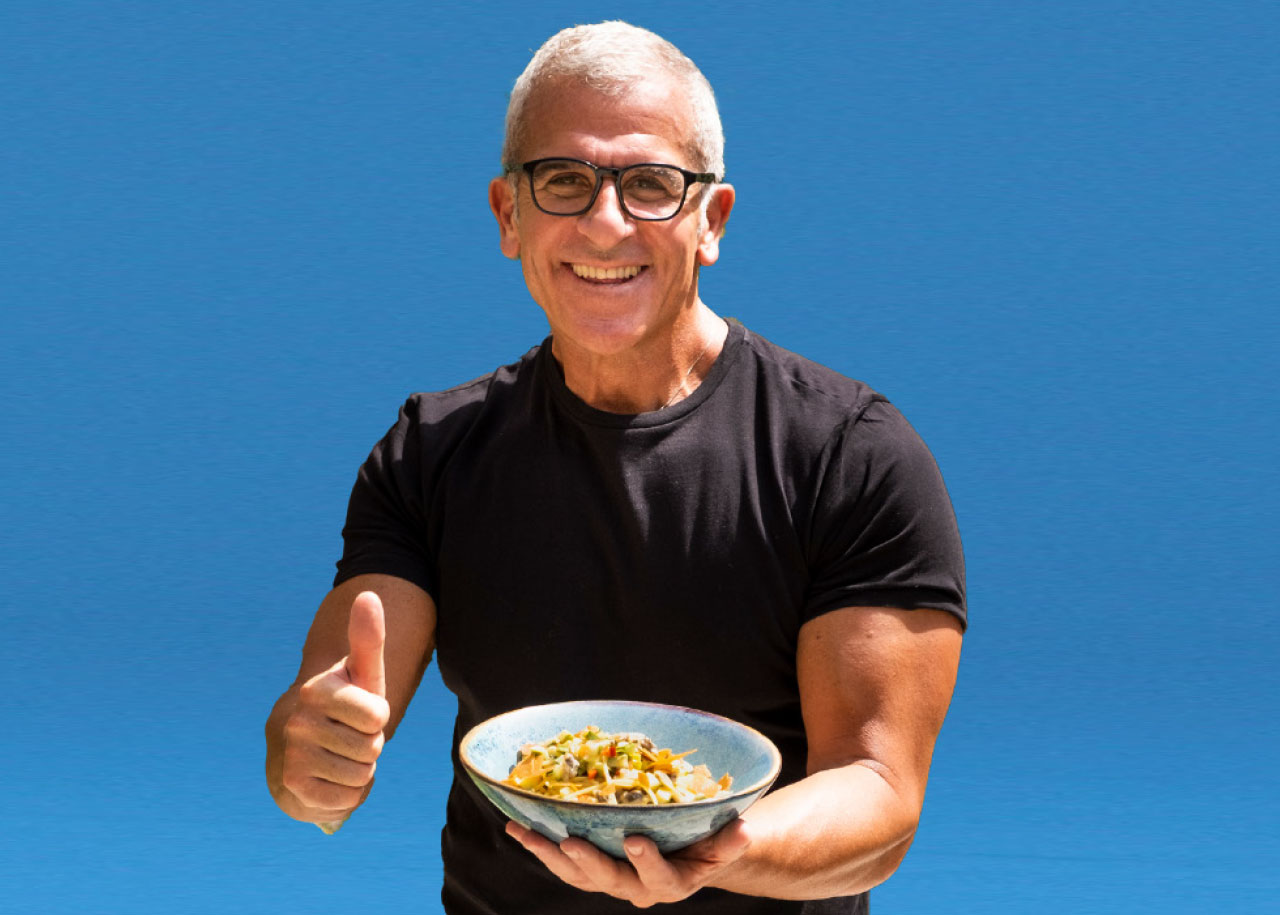
Ingredients for 4 servings
Ceci secchi precedentemente ammollati e lessati 150 g
Tahina (crema a base di semi di sesamo) 100 g
2 limoni
1 cucchiaio di olio extravergine di oliva (10 g)
Prezzemolo tritato
Paprika
Sale q.b.
Nutritional informations
Per porzione: 296 KcalEnvironmental impact
Per porzione:
50 g CO2 equivalente – impronta di carbonio
329 litri – impronta idrica
Preparation
Frulla i ceci lessati con un poco della loro acqua di cottura, ottenendo una purea densa. Aggiungi il succo filtrato dei limoni e 100 g di tahina. Unisci un filo di olio, regola di sale e paprika e servi con prezzemolo tritato.
Purea di fave e cicoria
Una ricetta tradizionale pugliese. Un abbinamento tipico della cucina contadina in cui il gusto amaro delle erbette bilancia quello della purea di fave.
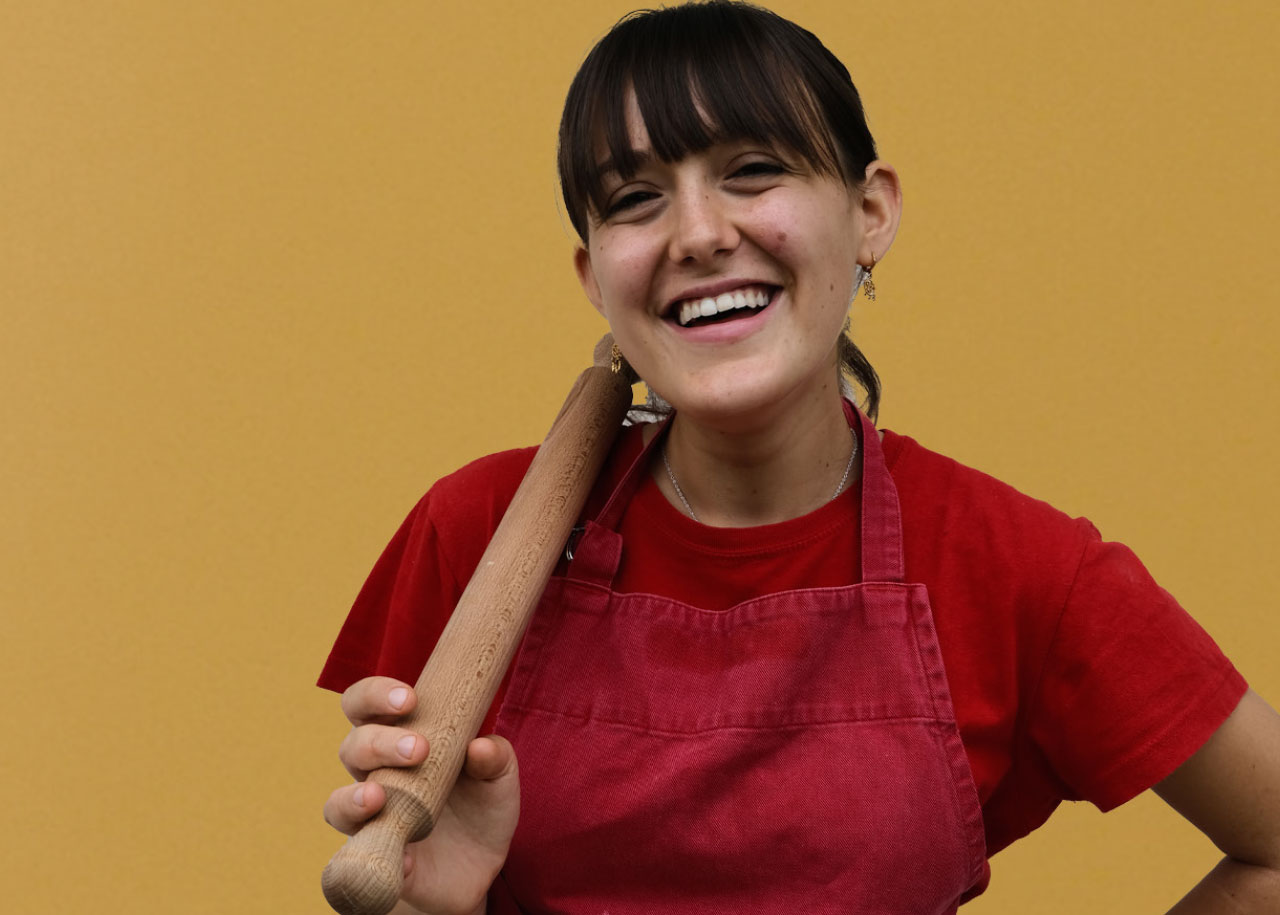
Ingredients for 4 servings
Fave secche sgusciate 300 g
Cicoria 600 g
1 cipolla bianca
Olio extravergine di oliva 40 g
Sale q.b.
Nutritional informations
Per porzione: 280 KcalEnvironmental impact
Per porzione:
128 g CO2 equivalente – impronta di carbonio
345 litri – impronta idrica
Preparation
Metti a bollire le fave, fatte precedentemente ammollare per 12 ore (o la notte prima), con una cipolla tagliata a fette per circa mezz’ora. Le fave tenderanno a sfarsi in cottura, creando una purea. Pulisci la cicoria eliminando le estremità terrose, separa le foglie, sciacquale e mettile a bagno per circa 10-15 minuti, così da far depositare sul fondo della ciotola eventuali residui di terra. Una volta pulita la verdura, falla cuocere in acqua salata per una decina di minuti a seconda della consistenza che preferisci. Una volta pronte sia le fave che la cicoria, prepara un leggero battuto di cipolla e fallo appassire con mezzo bicchiere d’acqua. Aggiungi quindi gli ingredienti precedentemente preparati e amalgamali in un’unica composta. Prima di servire in tavola aggiungi un filo di extravergine d’oliva. Se preferisci, puoi servire separatamente i due ingredienti all’interno dello stesso piatto, ripassando solo la cicoria, e puoi condire sempre il tutto con un cucchiaio di olio.
Polpettone di ceci e carote
Un secondo piatto ricco di proteine vegetali, validissima alternativa alla più classica variante realizzata con la carne tritata.

Ingredients for 4 servings
Ceci secchi 200 g (in alternativa
2 confezioni grandi di ceci
in scatola)
Carote 200 g
1 cipolla
4 uova
4 cucchiai di farina
4 cucchiai di pangrattato
Parmigiano 80 g
Prezzemolo
4 cucchiai di olio extravergine
di oliva (40 g)
Nutritional informations
Per porzione: 520 KcalEnvironmental impact
Per porzione:
451 g CO2 equivalente – impronta di carbonio
627 litri – impronta idrica
Preparation
Taglia la cipolla e le carote a dadini e soffriggile con un po’ di olio extravergine d’oliva. In un mixer, aggiungi il composto insieme ai ceci, le uova, la farina, il pangrattato, il parmigiano, il restante olio e il prezzemolo. Frulla fino a ottenere un composto omogeneo. Forma un cilindro con il composto, avvolto nella carta da forno, oppure versalo in una teglia da plumcake. Cuoci a 180° per 45 minuti e lascia riposare 10 minuti una volta estratto dal forno.
Frittata alle erbe aromatiche
Una versione creativa della classica frittata, da realizzare con le erbe aromatiche preferite, variandole in base alla stagione: in primavera-estate la scelta è più ampia.
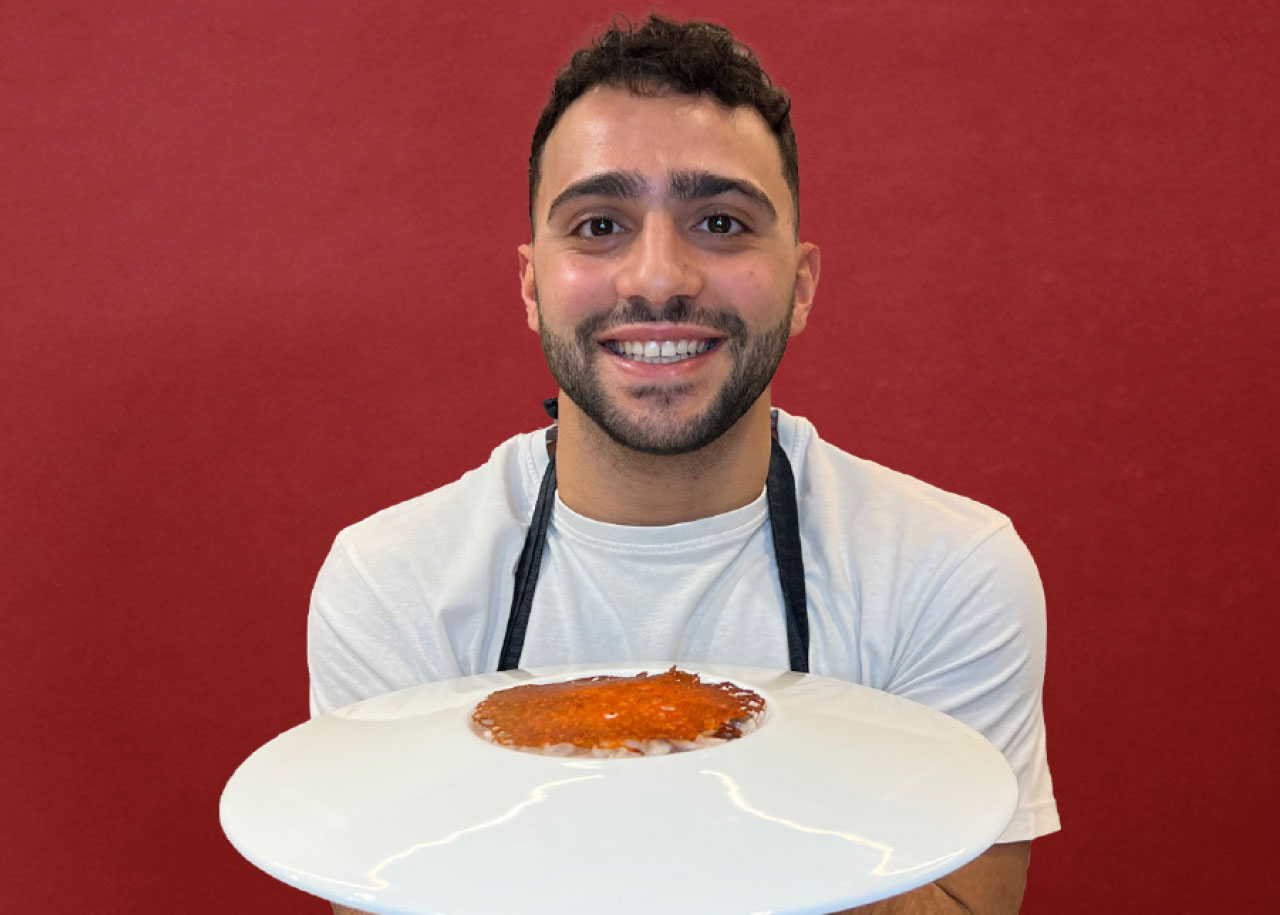
Ingredients for 4 servings
8 uova intere
Parmigiano reggiano 50 g
Mix di erbe aromatiche tritate (maggiorana, prezzemolo, erba cipollina, dragoncello) 50 g
20 foglie di basilico
Burro 20 g
2 cucchiai di olio extravergine
di oliva (20 g)
Sale q.b.
Nutritional informations
Per porzione: 257 KcalEnvironmental impact
Per porzione:
494 g CO2 equivalente – impronta di carbonio
420 litri – impronta idrica
Preparation
Rompi le uova in una bowl, facendo attenzione ai pezzetti di guscio. Unisci il parmigiano grattugiato e il mix di erbe fini tritate, mescolando bene il tutto. Dosa di sale. Scalda una padella antiaderente con olio e burro. Quando il burro sarà fuso e l’olio ben caldo, versa il composto e cuoci da entrambi i lati. Per girare la frittata, per non correre rischi, utilizza un coperchio piatto.

The book you are browsing was printed on certified paper obtained from the processing of agro-industrial by-products and through an environmentally friendly process.
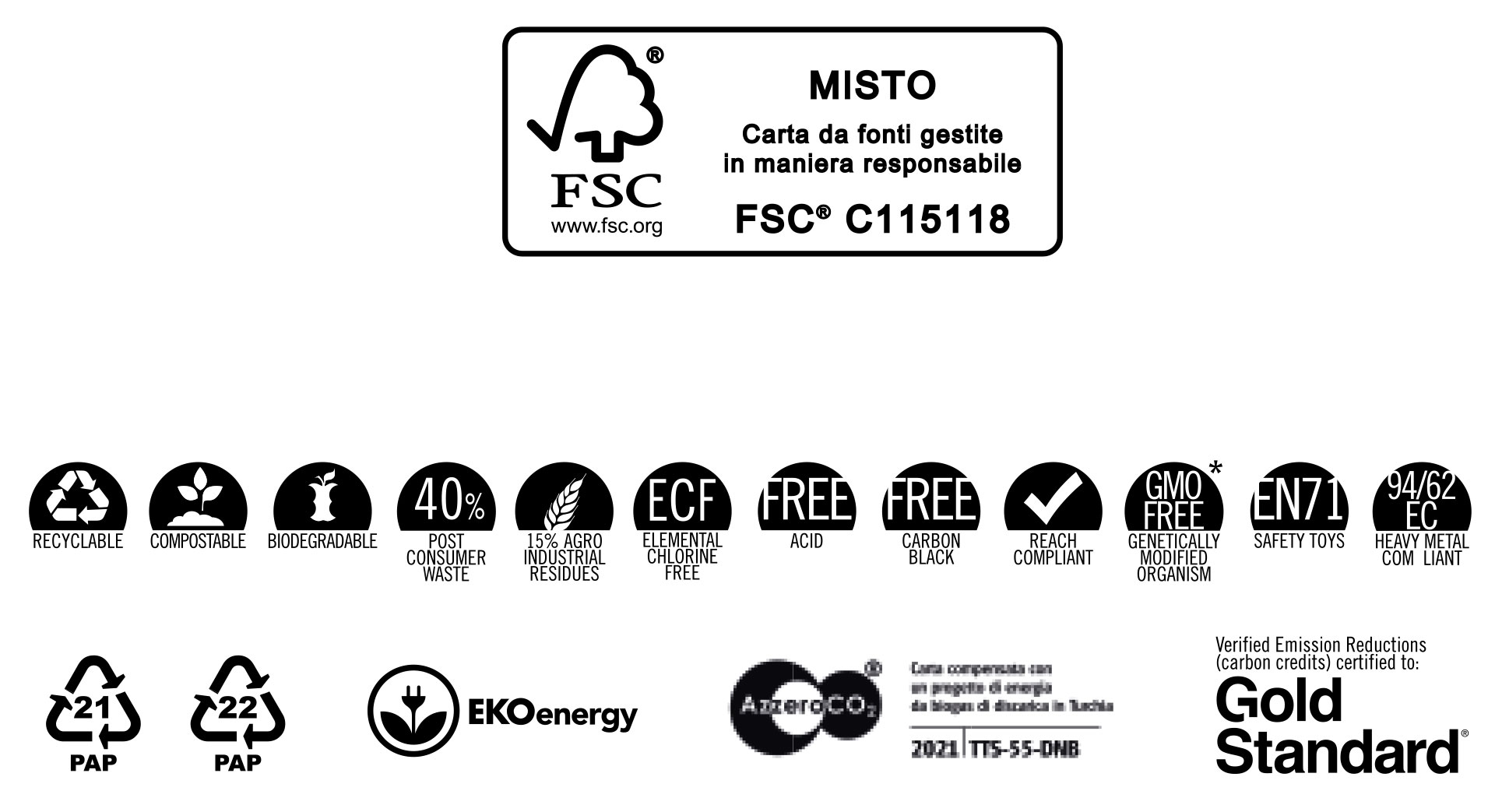
* The agro-industrial by-products used are GMO-free as they of Italian origin from controlled supply chains.


Summary
Free search
Search results for ''
No results for ''
Keep an eye on savings
Let's cook together
Did you know that
Your health
Your land
The recipes
Fill out the form to receive the book*.
